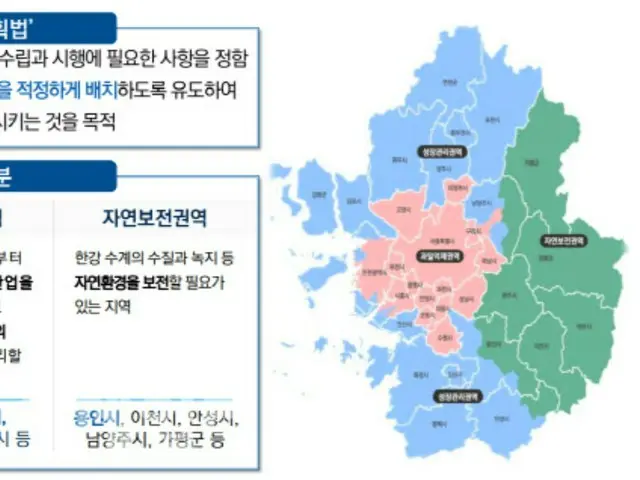The city of Seoul and Gyeonggi-do were divided into three areas: overcrowding control areas, growth management areas, and nature conservation areas, and regulations tailored to the characteristics of each area were put in place to curb excessive growth.
The inflow and permission of facilities that induce population concentration are restricted here, it is impossible to designate it as an industrial area, and if a corporation is established, acquisition tax and registration license tax are tripled.
They are also excluded from the 50 to 100 percent corporate tax exemption that would be available to companies that had been relocated to South Korea in the past. As a result, many of the overcrowding control area municipalities in Gyeonggi Province have become commuter towns.
In response to this, calls for deregulation of the Urban Planning Act began to emerge in the early 2000s. Of the 14 municipalities in Gyeonggi Province that fall under the overcrowding control zone under the act, 12 mayors
In November 2013, the Overcrowding Control Area Local Government Joint Response Council was launched. Areas within the overcrowding control area, except for development restriction areas, were changed to growth management interests with fewer regulations under the Urban Planning and Control Act, and the industrial areas were reexamined.
Yang Eun-sun, a researcher at Suwon City Hall, said, "In order to strengthen the country's competitiveness, we should shift from restricting growth in the capital region to shifting to a policy of managing growth."
There are.
2024/09/18 09:04 KST
Copyrights(C) Edaily wowkorea.jp 101

